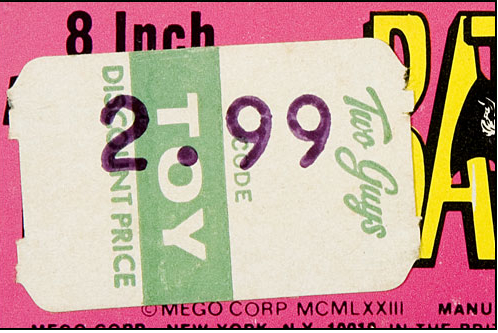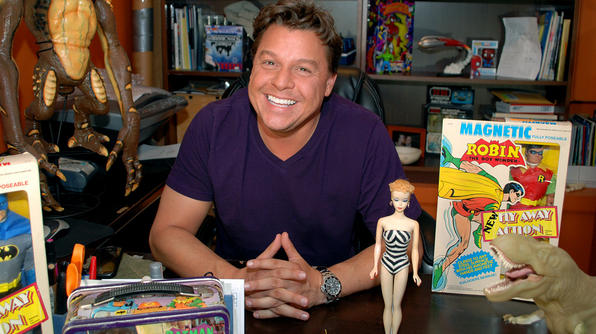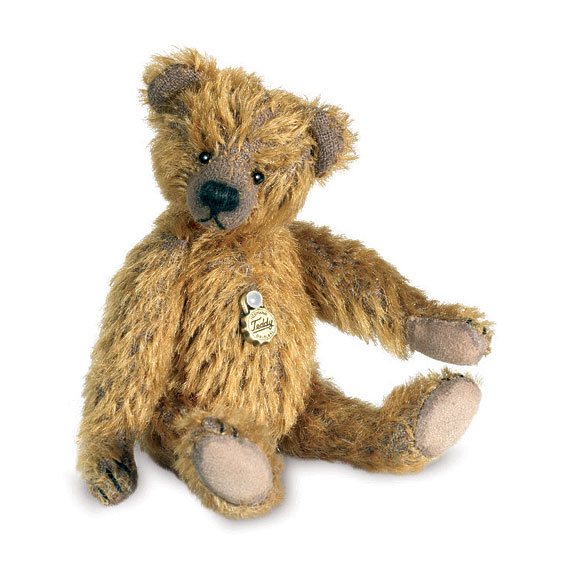If you’re thinking of beginning a collection of toys, there’s a huge variety to choose from. Many collectors specialise in a particular area – such as clockwork toys, robots or cars – or in a particular maker, but others just collect those toys they really love.
You need to be sure of your area of interest before visiting the larger auction houses because many sell different types of toy – such as soldiers, model cars or trains – in specialist sales.
Prices for toys depend on the maker, the rarity of the model and the condition. Although chips and dents are virtually inevitable, a toy in mint condition, or with its original packaging, is what every serious collector longs for. Repainting will nearly always reduce the value of a collector’s toy, so only repaint items in your collection as a last resort.
Toys made by well-known firms are always sought, and minor damage is acceptable if the toy is made by a premium firm such as Bing, Märklin or Lehmann. Viewing sales and visiting specialist dealers is the best way of getting to know which models are the most desirable. Once you’ve a good feel for prices, you don’t have to buy from an upmarket auction house or dealer. Because many collectable toys aren’t very old, it’s always worth scouring your local junk shop for bargains.
Tinplate, trains and celluloid toys
If you want to specialise in collecting toys with a particular theme, tinplate toys offer lots of options. Toy trains have always been popular, of course. Or for a more unusual choice, look out for toys made from celluloid.
Tinplate toys
Horse-drawn carriages, boats, submarines, cars and even airships are just some of the plethora of tinplate toys made during the late 19th and early 20th century which reflect contemporary developments in transport.
German toy companies led the field in the manufacture of tinplate toys and those made by well-known firms such as Bing, Märklin and Lehmann are famed for their accuracy.
Bing toys
The Bing car at the top of the page is a rear entry Tonneau with a clockwork mechanism, made about 1906. It’s especially desirable because the hand-enamelled paintwork is in near-perfect condition. It’s worth £5,000 to £8,000.
Märklin toys
Märklin toys, such as this spirit-fired torpedo boat, can be identified by their distinctive maker’s mark, which in this case is stamped on the boat’s rudder. This one would cost between £4,500 and £6,500.
Trains
Trains were one of the most important forms of transport from the mid-19th century and not surprisingly they provided toy makers with a fertile source of inspiration. The earliest toy trains were clockwork or made from wood but by about 1900 electric trains began to be produced in substantial numbers.
Märklin produced the first trains to use a numerical gauge system, to identify the different-sized models available. This Gauge III engine is the largest size made. It dates from about 1909 and would be worth more than £20,000 – well out of the price range of the average schoolboy.
Disney toys
The earliest toys representing Disney characters were produced by German toy manufacturers such as Distler, who was probably responsible for this 1930s clockwork Mickey Mouse barrel organ toy. This thin, rather gloomy-looking Mickey is the most valuable. Even though he’s lost his tail, Minnie has been repainted and there are signs of rusting, the piece would still be worth over £1,500.
What to look for
- Mickey and Minnie on a motorcycle, by Tipp & Co
- Mickey the Musical Mouse, by Nifty
- Mickey the Drummer, by Nifty
- Donald Ducks with long bills
Celluloid toys
Celluloid toys were made from the late 19th century. This substance became obsolete with the advent of plastics in the 20th century and nowadays celluloid toys are keenly collected, though they are generally less expensive than tinplate toys of a similar date.
Toys made from celluloid are highly flammable and prone to denting and cracking. The substance is almost impossible to restore satisfactorily, so avoid damaged celluloid toys.
The box of this celluloid Mickey on Pluto, produced in Japan for the Western market, shows it’s been made under special licence and is therefore more desirable than an unauthorised version. It’s worth about £600.
Wooden, lead and die-cast toys
Carved wooden toys and lead soldiers from the 18th and 19th centuries and die-cast toys from the 20th century all have appeal to collectors as well as a charm of their own.
Wooden toys
Carved wooden toys have an appealing naivety. They were produced in quantity by German makers during the 18th and 19th centuries and some very collectable wooden toys were also made in America by the Schoenhut company.
Noah’s arks were a popular subject for German wooden-toy carvers
Noah’s arks were a popular subject for German wooden-toy carvers. Their value depends on the size, quality and the number of animals. The 19th-century one pictured above is large at 69cm (27in) wide, fairly elaborate and contains over 200 animals, so it would be worth £1,000 to £2,000. Smaller, less elaborate arks cost from £200.
Many 20th-century wooden toys are still affordably priced. This 1930s apple filled with skittles is worth £20 to £25.
Lead soldiers
Lead became popular as a material for various types of soldiers and other toys during the 18th and 19th century.
In Germany, France and England high-quality solid and hollow-cast lead soldiers were produced by firms such as Lucotte, Heyde and William Britain. Today these are among the most valuable of all toy soldiers.
William Britain’s soldiers were made using the hollow-casting method. A hollow-cast figure will have a small hole where the excess molten metal was poured out of the mould when it was made. This set made by the company would fetch between £2,500 and £3,500.
Die-cast toys
Die-cast toys were also made by hollow casting and were first produced in France in about 1910. In England, Dinky Toys, part of the Meccano company, dominated the market for die-cast toys from the 1930s to the 1960s and rare Dinky advertising vans or unusual series are well worth looking out for.
Complete sets of die-cast toys are always desirable, especially when they come with their original packaging. Although this box, which dates from around 1937, is battered it still doubles the value of the set of aeroplanes, to between £600 and £900.


















